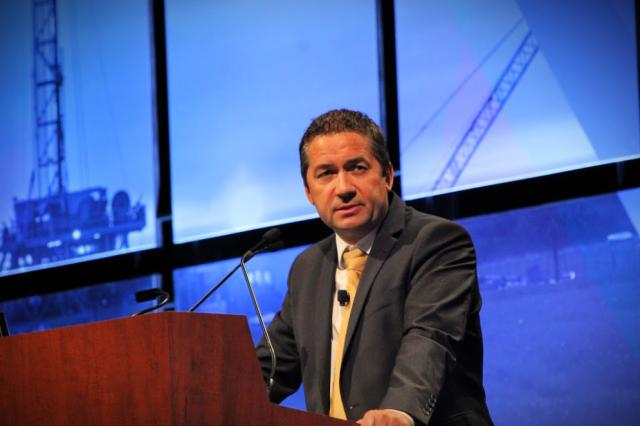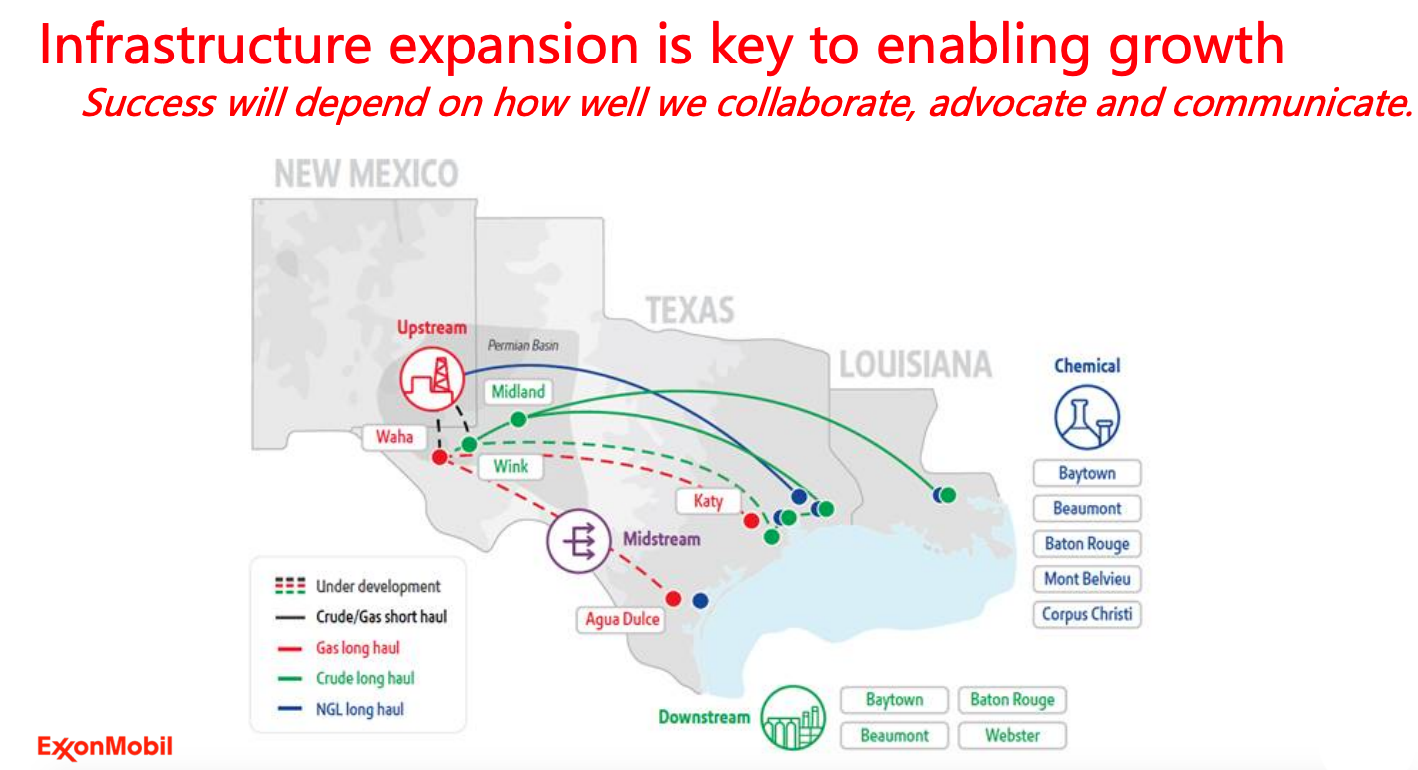
“We have a lot more history left to write on the Permian basin, even after 100 years,” said Staale Gjervik, president of XTO Energy, during Hart Energy’s Executive Oil Conference in Midland, Texas, on Nov. 6. (Source: Hart Energy)
MIDLAND, Texas—The president of Exxon Mobil Corp. subsidiary XTO Energy called the development of U.S. unconventional oil and gas a very immature business and added many more changes are ahead in the sector. Speaking at the Hart Energy’s Executive Oil Conference in Midland, Texas on Nov. 6, Staale Gjervik likened the looming evolution to that of a more personal technology—the mobile phone.
“How many here have used a Blackberry?” he asked attendees. “Blackberry peaked in 2010, then it was the iPhone. The iPhone came into the market initially in 2007. Technology has been highly disruptive to status quo and really is still rapidly changing and shaping our lives.”
Evolution in the unconventionals has moved to single-bench plays in the Barnett and two-bench plays in the Haynesville, to multibench plays into double-digit horizons in the Permian. XTO is moving ahead in the region with 55 rigs working to help the producer hit its production target of 1 million barrels of oil per day (MMbbl/d) by 2024. The operator has close to 10,000 people/contractors working for them in the Permian today.
At its Cassidy pad in Martin County, Texas, XTO is drilling 27 wells, each with 10,000-ft laterals to develop the Joe Mill through the Wolfcamp B target in a single drilling stack. The longer wells are designed to maximize recovery from the full stack of productive intervals. The simultaneous development helps alleviate fracture-driven interactions between the primary and infill wells.
“It takes scale to do this,” Gjervik said. “Specifically as many as eight drilling rigs and six completion crews on location at a single time. It also takes confidence, courage and conviction as we’re using this strategy at multiple locations. Our approach and investment strategy will take time, but we’re convinced it will bear fruit. We’re not chasing headline-grabbing IPs, although at times those can be nice, too.”
To handle the planned increased takeaway from the region, XTO is taking things into its own hands and constructing a network of pipelines and terminals that will connect its refining assets along the Texas Gulf coast to its Permian production. Early next year, the company will start up one of the largest oil and gas handling facility in the basin—the Cowboy Central Delivery Point in southeast New Mexico.
“At peak, 600,000 barrels of oil will flow through the Cowboy terminal alone,” he said.
Production growth in the region has already outpaced infrastructure and the problem does not appear to have a quick and easy solution. According to XTO, and taking currently growth rates, industry will require a new 2 billion cubic feet per day natural gas pipeline every nine months to support the Permian. Today, production from the Permian is about 4 million barrels of oil equivalent (MMboe/d) per day. That number is expected to grow to more than 6 MMboe/d by 2022.

“We have a lot more history left to write on the Permian basin, even after 100 years,” Gjervik said. “If you want to be in the oil patch, the Permian is truly the place to be.”
Recommended Reading
Guyana’s Stabroek Boosts Production as Chevron Watches, Waits
2024-04-25 - Chevron Corp.’s planned $53 billion acquisition of Hess Corp. could potentially close in 2025, but in the meantime, the California-based energy giant is in a “read only” mode as an Exxon Mobil-led consortium boosts Guyana production.
US Interior Department Releases Offshore Wind Lease Schedule
2024-04-24 - The U.S. Interior Department’s schedule includes up to a dozen lease sales through 2028 for offshore wind, compared to three for oil and gas lease sales through 2029.
Utah’s Ute Tribe Demands FTC Allow XCL-Altamont Deal
2024-04-24 - More than 90% of the Utah Ute tribe’s income is from energy development on its 4.5-million-acre reservation and the tribe says XCL Resources’ bid to buy Altamont Energy shouldn’t be blocked.
Mexico Presidential Hopeful Sheinbaum Emphasizes Energy Sovereignty
2024-04-24 - Claudia Sheinbaum, vying to becoming Mexico’s next president this summer, says she isn’t in favor of an absolute privatization of the energy sector but she isn’t against private investments either.
Venture Global Gets FERC Nod to Process Gas for LNG
2024-04-23 - Venture Global’s massive export terminal will change natural gas flows across the Gulf of Mexico but its Plaquemines LNG export terminal may still be years away from delivering LNG to long-term customers.





